Do Dual Camera Phones Use One Camera At A Time Or Both Simultaneously
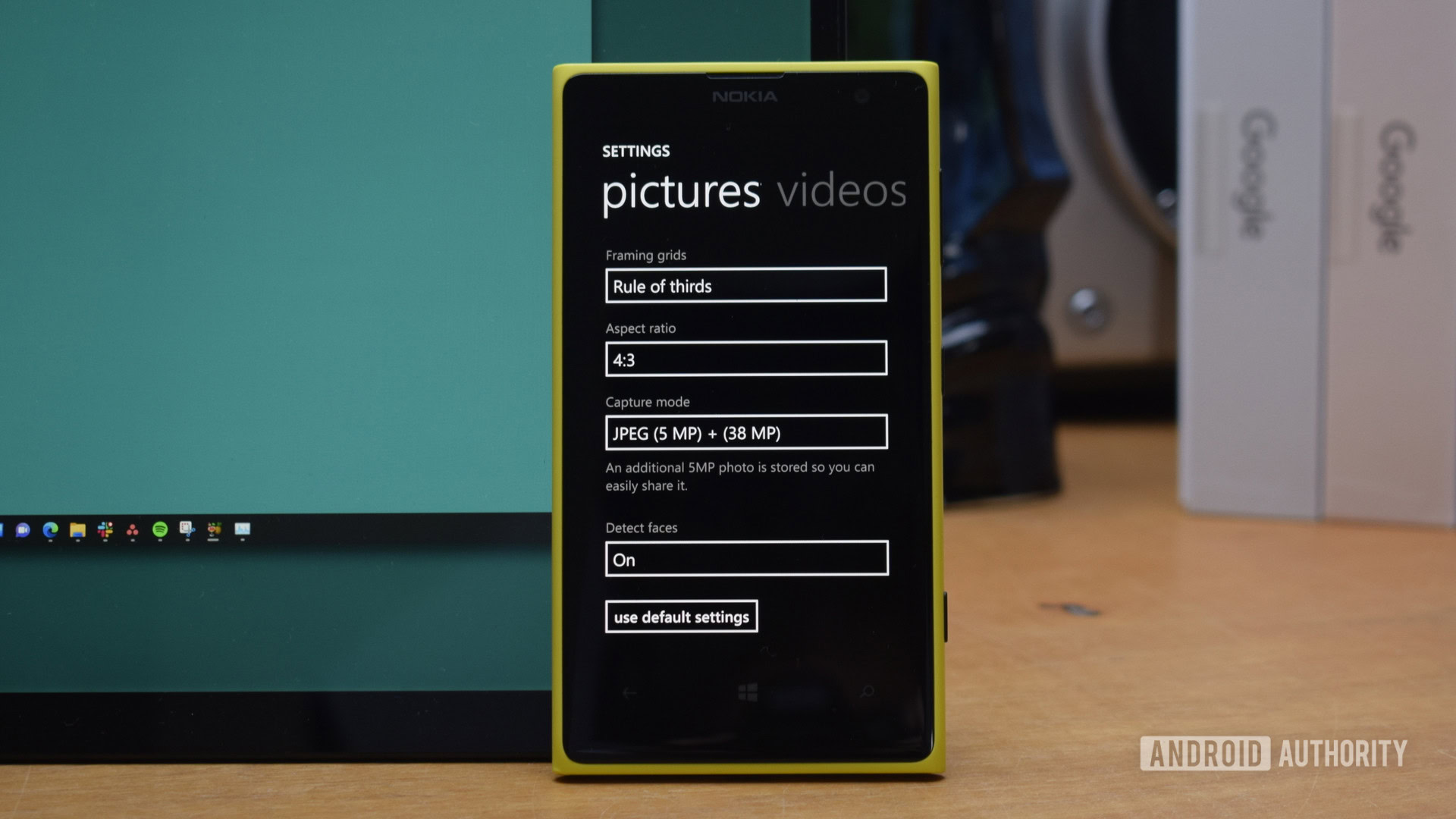
Hadlee Simons / Android Authority
Today'due south flagship smartphones are absolutely jam-packed with photographic camera features. From staples like HDR, dark mode, and portrait fashion to astrophotography, Single Have, Magic Eraser, and Clone mode, there actually are no shortage of modes to choose from if yous want to get creative (or only want a meliorate shot).
In proverb so, there's ane characteristic I'd really similar Android manufacturers to embrace in 2022, and that'due south simultaneous photograph capture.
When we're talking about simultaneous capture, we mean taking ii or more than photos at once. And no, nosotros're not talking near the Dual Sight or "Bothie" feature popularized past HMD's Nokia phones, letting you take a photo via the rear photographic camera and front shooter. We mean photos simultaneously shot via different rear cameras or several separate photos meantime shot via the same photographic camera. This isn't a new feature but it's one that, I feel, should be far more than widespread.
More photography coverage: The best photographic camera phones worth buying
A cursory history of simultaneous capture
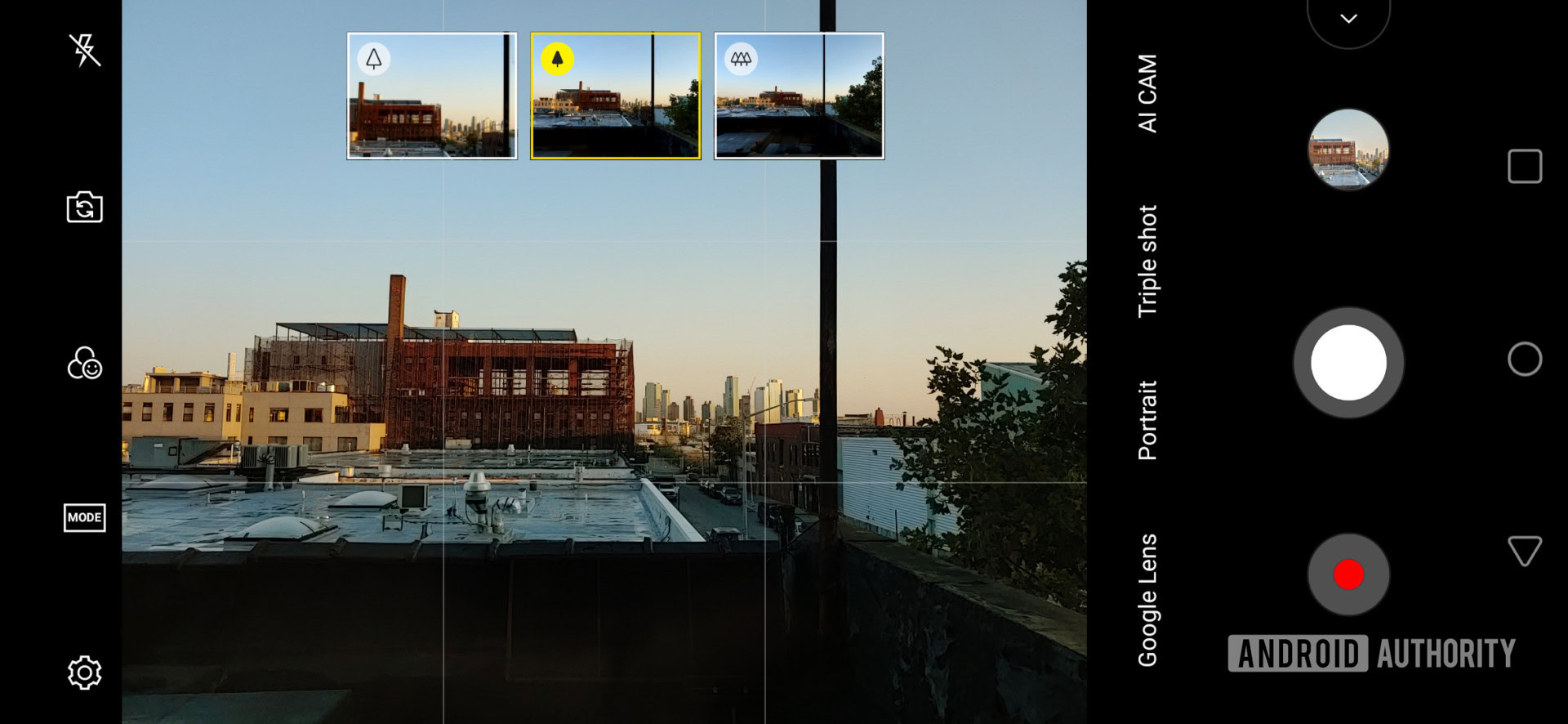
One of the earliest examples of this tech came with Nokia's Lumia Windows Phone handsets. Devices similar the Lumia 1020 and 1520 offered the ability to simultaneously capture full-resolution (38MP and 19MP respectively) and oversampled images (5MP) dorsum in 2013. This ways y'all got ane prototype for editing and another image that'south smaller, cleaner, and more suitable for sharing.
The fun didn't stop there with these phones, equally they also offered simultaneous JPEG and RAW capture. Yes, y'all could capture a full-resolution RAW shot and a 5MP oversampled JPEG. This was some other case of how simultaneous epitome capture tin be convenient, giving you a file for non-destructive editing and a smaller file for sharing again. This is actually one of the well-nigh common examples of this feature on the marketplace today, with the likes of Google, Sony, OnePlus, and Vivo all offering simultaneous RAW+JPEG capture on some devices.
The likes of Nokia, Samsung, and LG take all offered simultaneous camera capture tricks in years gone past.
Samsung is another prominent instance of a company that embraced this feature. However, devices such equally the 2017-era Milky way Annotation 8 and Galaxy S9 Plus leaned on this for simultaneous capture via 2 different rear cameras. The so-called Dual Capture characteristic immune y'all to take a picture from the main camera and a 2x telephoto shot at the same time. And it'southward a feature that remained a Samsung staple until last year.
LG dabbled with this trend too, equally the LG V40 not but offered triple rear camera previews (seen in a higher place) just besides offered the Triple Shot feature dorsum in belatedly 2018. The telephone actually captured photos one after the other rather than simultaneously, only the process seemed brisk enough. It even put together a janky yet neat animation that lets you zoom in and out from one shot to the next.
The industry has toyed with these types of features for a while but at present is a good time for OEMs to embrace simultaneous capture tricks to an even greater extent.
Utilizing today's powerful hardware
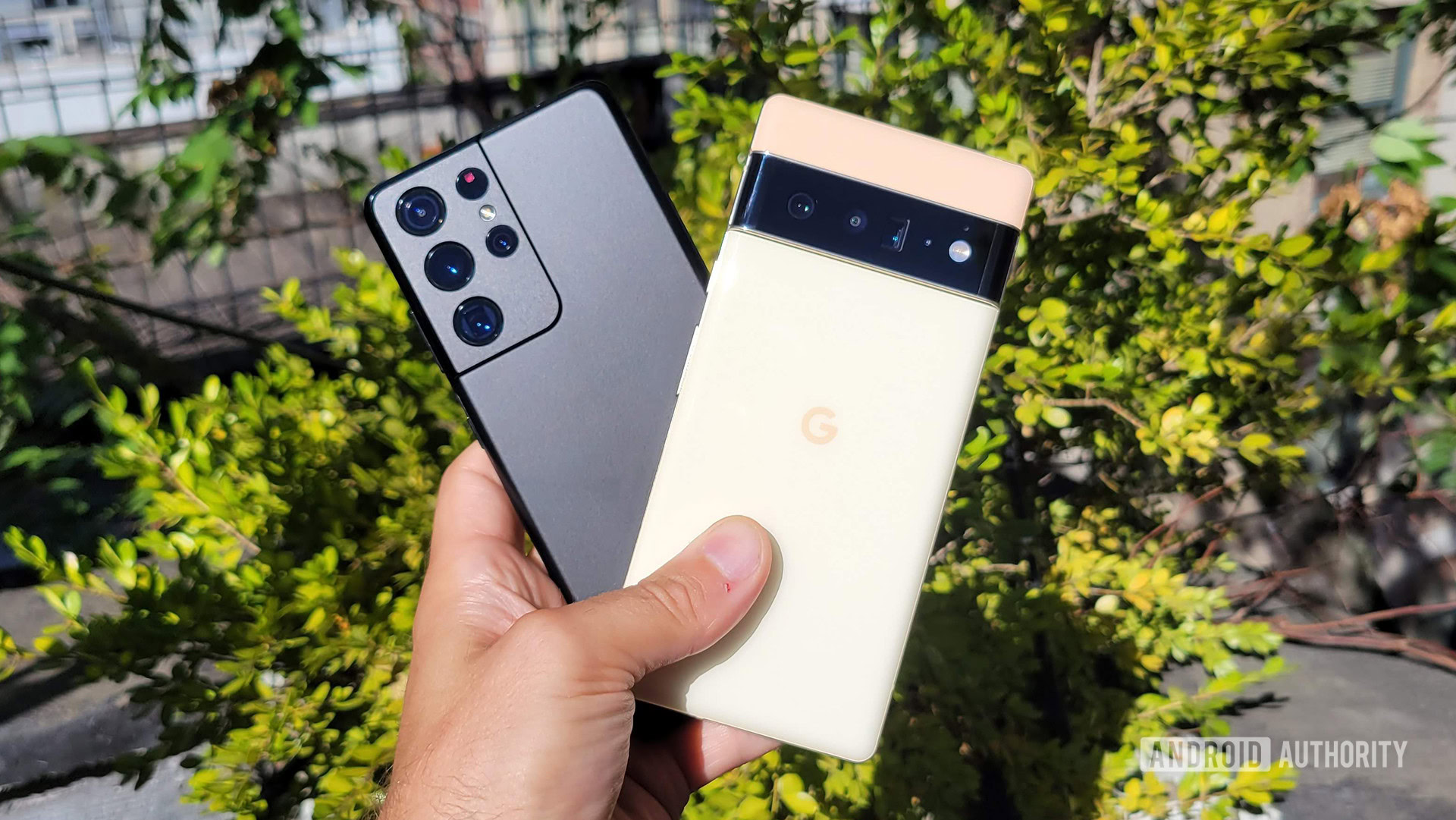
C. Scott Brownish / Android Authority
Modernistic processors are more than capable of simultaneous image capture smarts. For example, the Snapdragon 888 SoC which powers many of today'south flagships supports the ability to capture three 28MP shots at in one case, or 64MP+25MP dual camera capabilities. Meanwhile, the Dimensity 1200 chipset supports 32MP+16MP dual camera output. Samsung's Exynos 2100 as well offers concurrent data processing from four unlike photographic camera sensors.
2022'southward phone processors are upping the dues in an even bigger way when information technology comes to multi-camera and multi-frame prowess. The Snapdragon 8 Gen one serves upward simultaneous 36MP triple camera capture or 64MP+36MP dual camera support. Qualcomm's chipset even supports 240 12MP shots in burst fashion (upwardly from 120) and 30 frames of multi-frame image processing, illustrating but how much bandwidth is on tap. The upcoming Dimensity 9000 is similarly impressive, offering 32MP triple photographic camera capture and triple 4K HDR video capture.
Modern processors support multi-lens simultaneous epitome capture — nosotros simply demand manufacturers to include it.
The possibilities are most endless with modernistic hardware then, and we'd definitely like to run into companies resurrecting existing simultaneous capture modes and improving them.
For starters, Samsung's old Dual Capture feature could aggrandize to triple or fifty-fifty quad-camera capture. This would allow users to capture multiple perspectives at one time, such as the main, ultrawide, short-range telephoto, and periscope lenses. This could be handy for situations similar cityscape or landscape scenes, or whatever other scenes where yous were planning to take shots at multiple zoom factors anyhow.
In addition to the likes of Google, OnePlus, Sony, and Vivo already supporting concurrent RAW and JPEG capture, we'd too like to encounter a few more manufacturers offering this take on the technology. This is especially relevant at present that the likes of Apple, Samsung, and Vivo are supporting enhanced RAW shots for more than advanced editing.
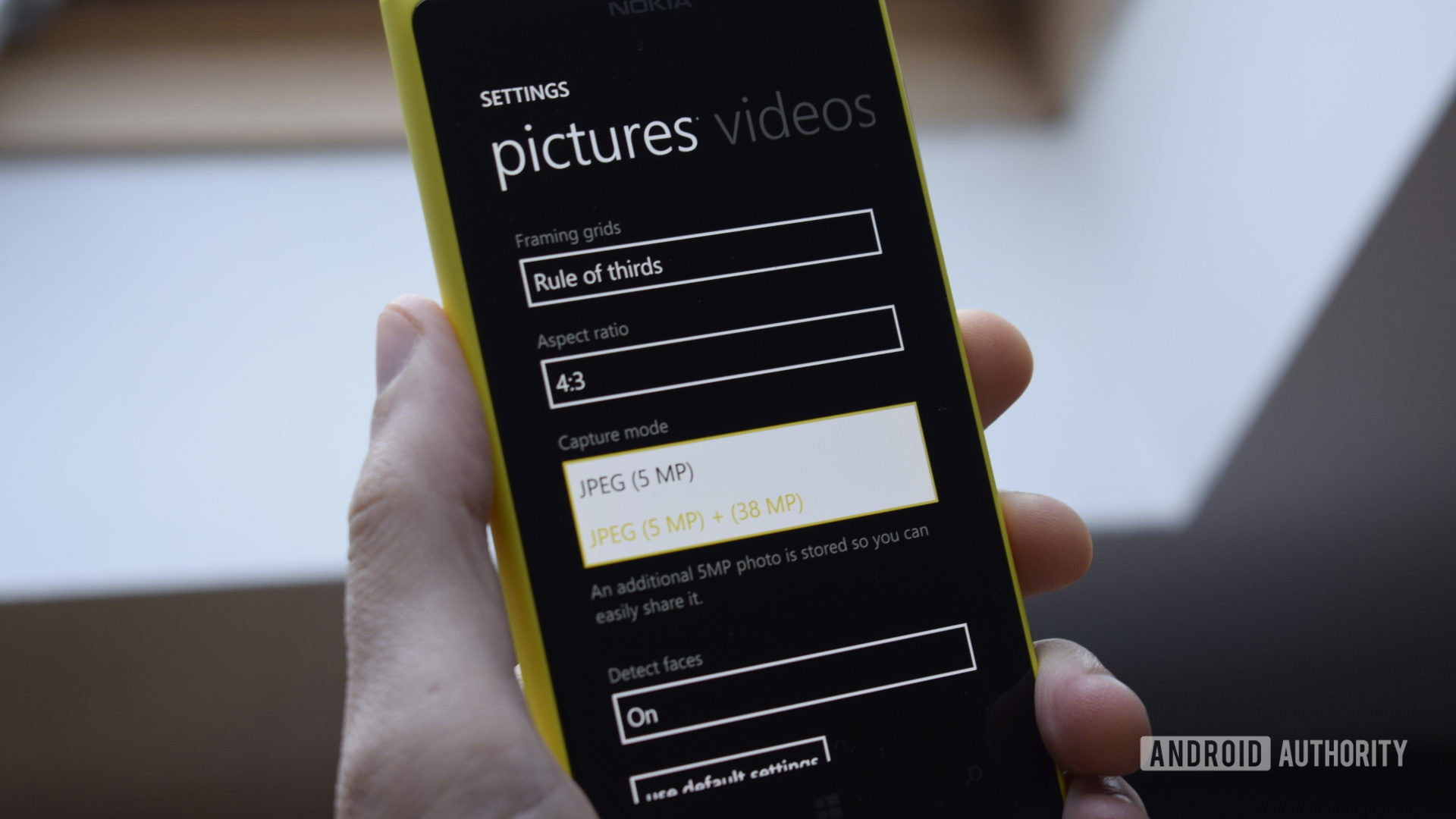
Robert Triggs / Android Say-so
In that location are even a few altogether different shooting options brands could implement to offer a more unique photography experience. We'd love to run across manufacturers offering simultaneous high-resolution and pixel-binned photo capture, for example. This would let y'all crop in on the high-resolution shot afterward if you lot wanted, while still giving you a clean, smaller snap also.
We've also recently seen Apple offer customizable color profiles, and a logical next pace would be to allow users to accept two photos at one time with each snap using a different specified color profile. We'd then be able to go on the one nosotros liked best without having to go back and take some other snap. Apple already gives you two files (with and without mistiness) when shooting in portrait mode, after all.
Assorted resolution, color profile, and AI-enhanced images would permit us pick the best-looking shot without having to reshoot.
How most this tech existence deployed to Pixels, taking one prototype with the shadow slider all the mode up and another with the shadow slider reduced? Or somewhere in betwixt. What about i shutter press giving you a shot with a smartphone'due south AI mode on and one with the way disabled? In that location's a huge range of possibilities.
Why stop at images?
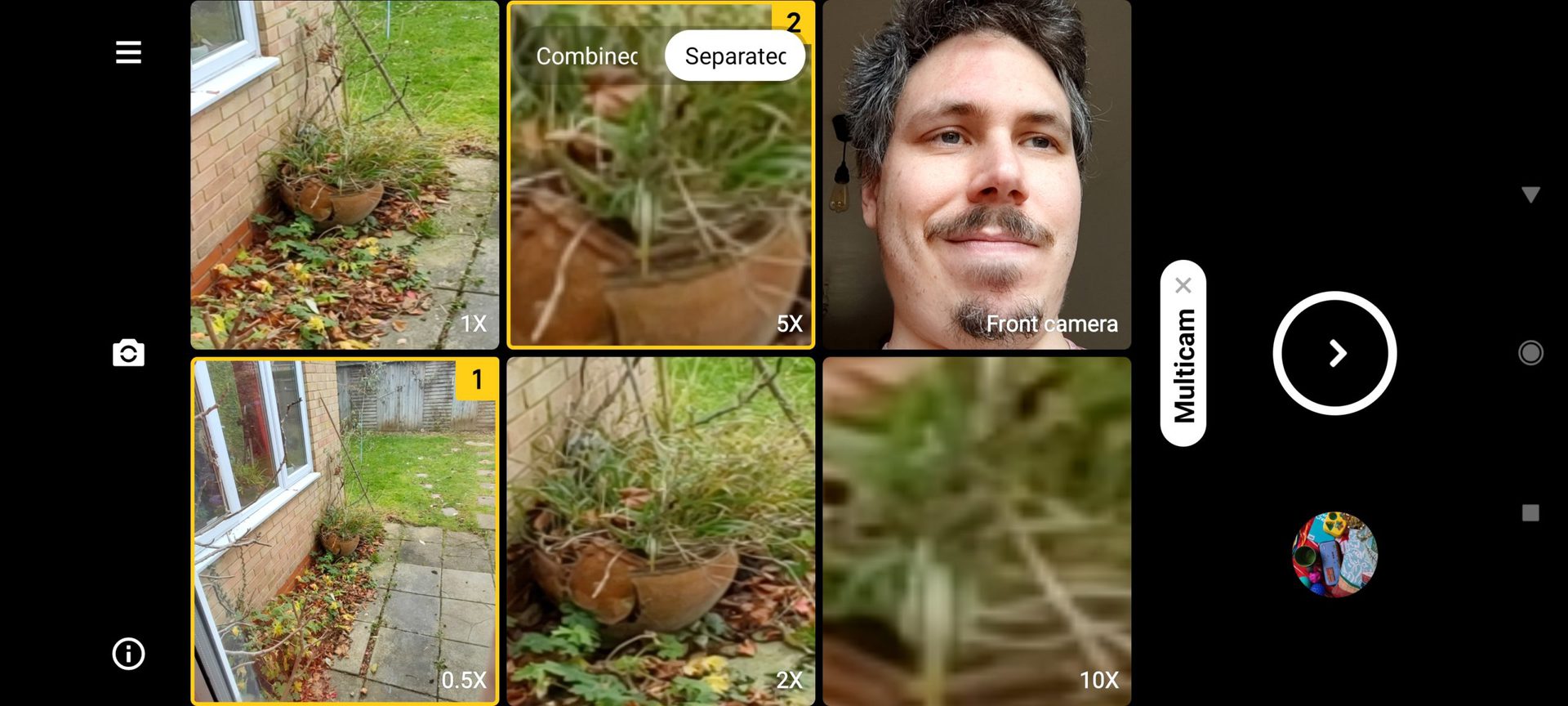
Robert Triggs / Android Authorisation
Simultaneous capture smarts aren't limited to photos either. Flagship phones from Huawei and Samsung, also as the Xiaomi Mi eleven Ultra seen above, offering a dual recording way. This records video via two cameras, exist it a front end and rear camera or two rear cameras. In Xiaomi's case, yous can choose to combine the two video streams into one video using a side-past-side format, or it tin spit out 2 dissever 1080p video files in a more traditional aspect ratio.
It'southward a really cool feature, and we'd beloved to see more manufacturers hop on this bandwagon, peculiarly when it comes to offering separate 16:9 video files. Even so, today's silicon offers support for features like triple 4K video, showing that concurrent recording via up to three rear cameras is inside accomplish also.
In that location are a few challenges with simultaneous capture via two or more cameras though, with the offset hurdle being thermal-related. Nosotros've already seen brands shy away from "unlimited" 960fps recording introduced by the Snapdragon 888 series, ostensibly due to thermal reasons. And we oasis't seen many companies offer concurrent video capture either, presumably for the same reasons.
Concurrent multi-camera video streams are a reality already with some brands, but there are nonetheless a few challenges to overcome.
Another challenge rightfully raised past Motorola representative Rahul Desai in an interview with video stabilization company iMint is video quality and stabilization. The interview specifically covers Motorola's use of a rear and front end camera for simultaneous video, but this applies to two or more than rear cameras too.
Desai noted that "Additionally, simultaneous cameras draw a lot more attention to video stabilization per se because you tin can conspicuously see if one camera is more stabilized and has better algorithms than the other. As a upshot, it will look more professional if they are stabilized in sequence." This presumably pertains more to recording two video streams as one file in a side-past-side format, just it's still something for manufacturers to think well-nigh.
Concurrent image capture is conspicuously less ambitious than concurrent video capture, so we'd beloved to see this tech come up to more phones in 2022 and beyond. After all, if the Milky way Note viii, Lumia 1520, and LG V40 all offered differing takes on the technology years agone, there'southward no reason why nosotros can't see more of information technology today. When combined with today'due south meliorate cameras, multiple lenses, and AI smarts, simultaneous capture should be a stand up-out feature.
Source: https://www.androidauthority.com/simultaneous-camera-capture-smartphones-3070237/
Posted by: bynumablued.blogspot.com

0 Response to "Do Dual Camera Phones Use One Camera At A Time Or Both Simultaneously"
Post a Comment